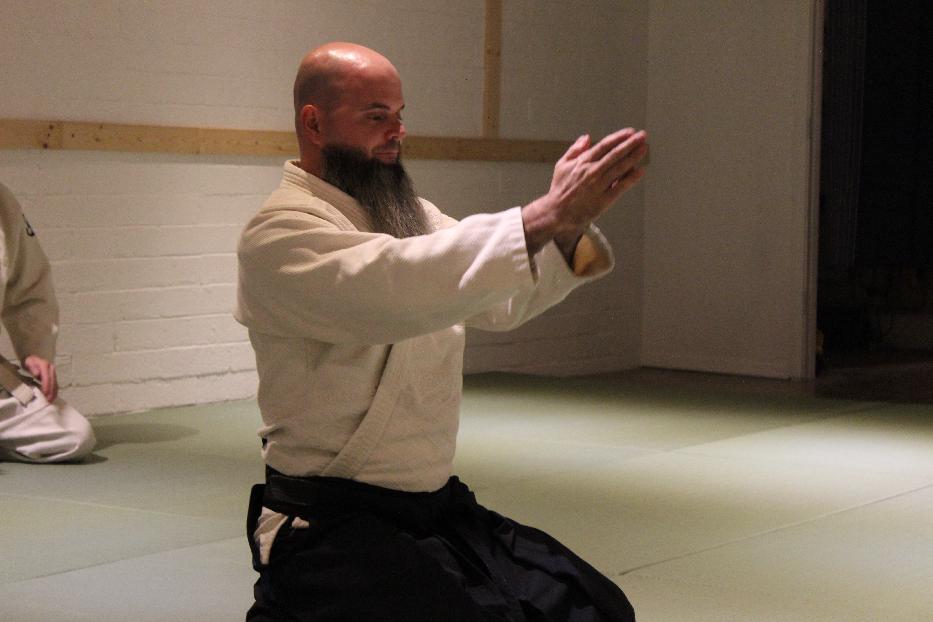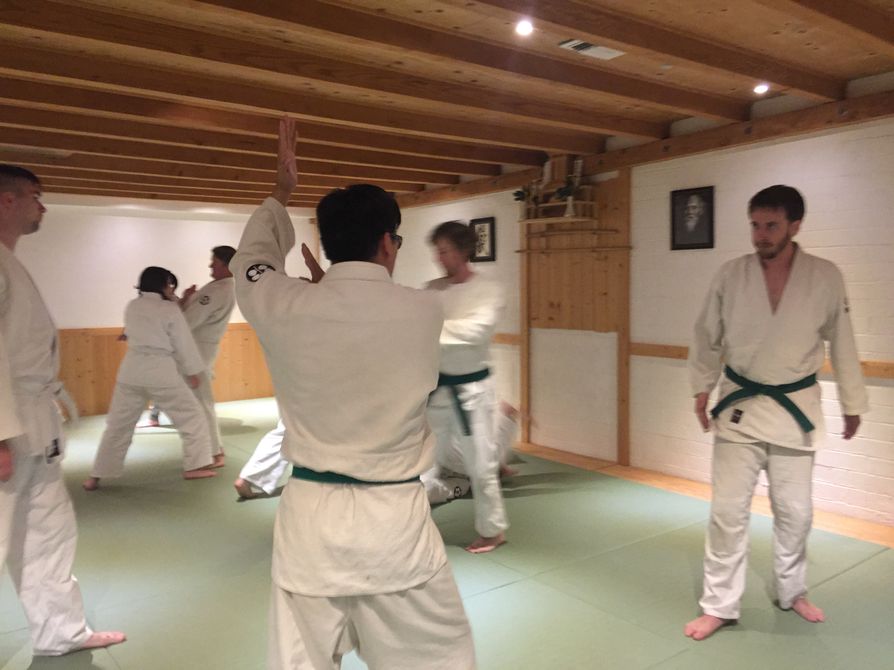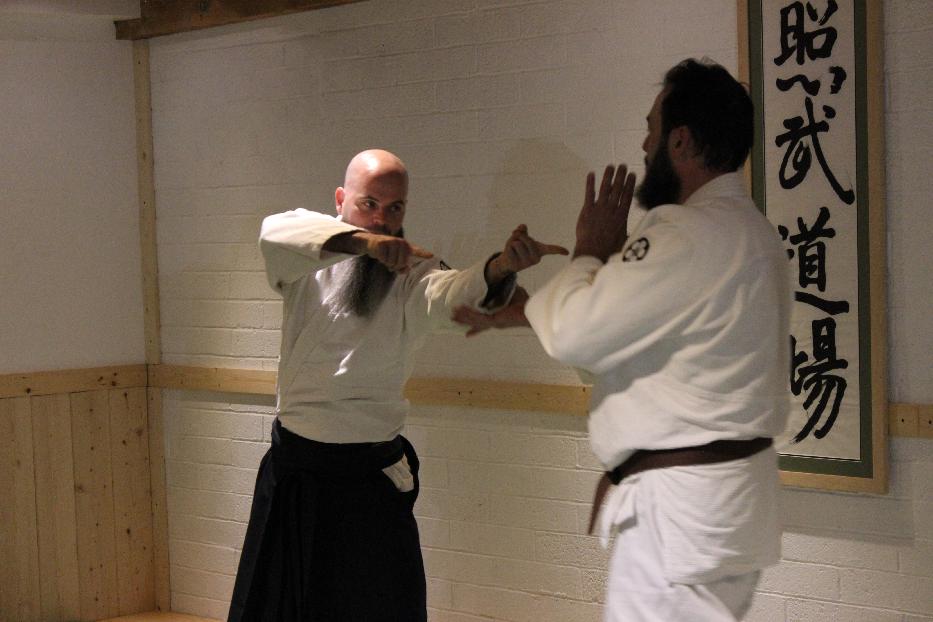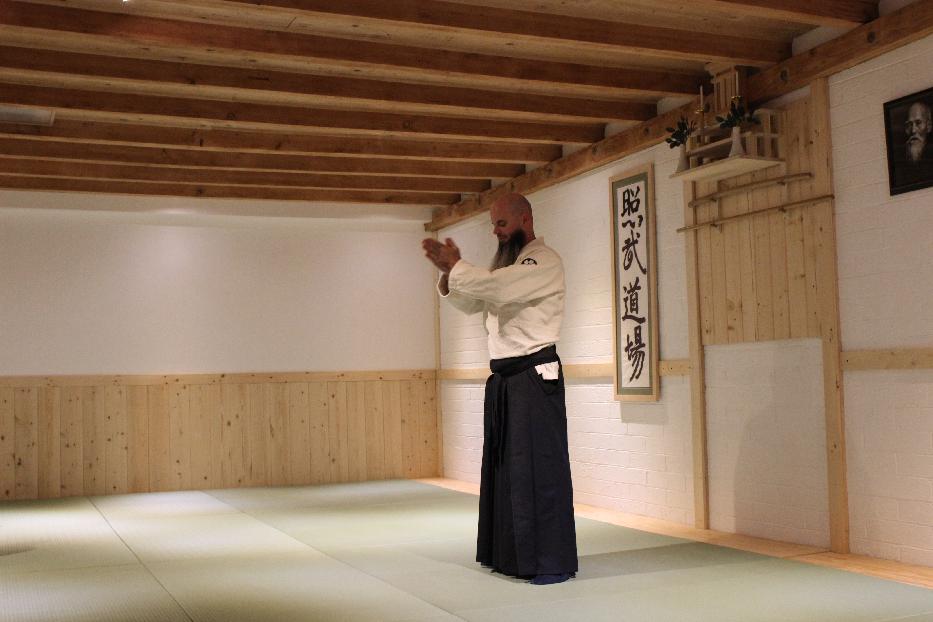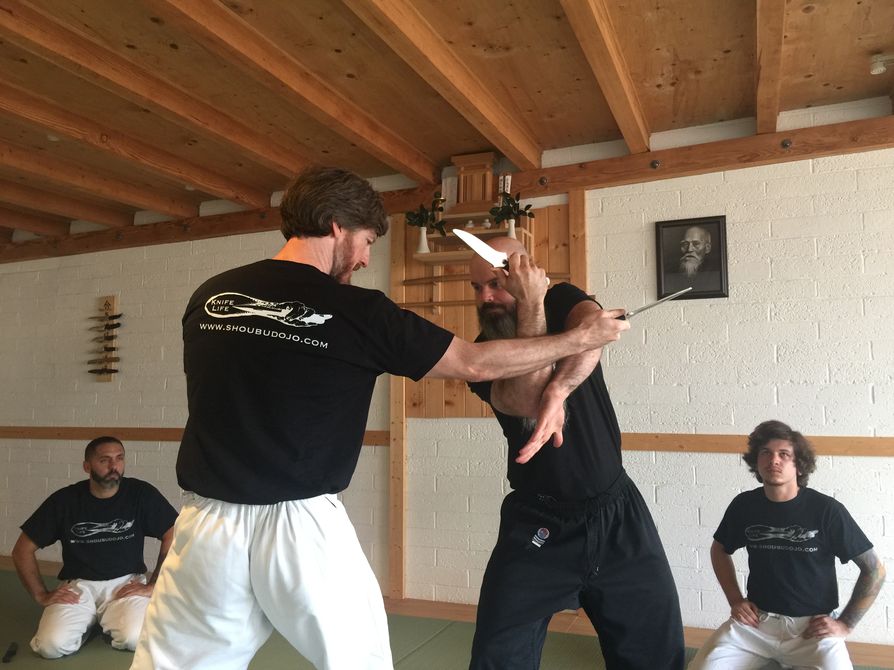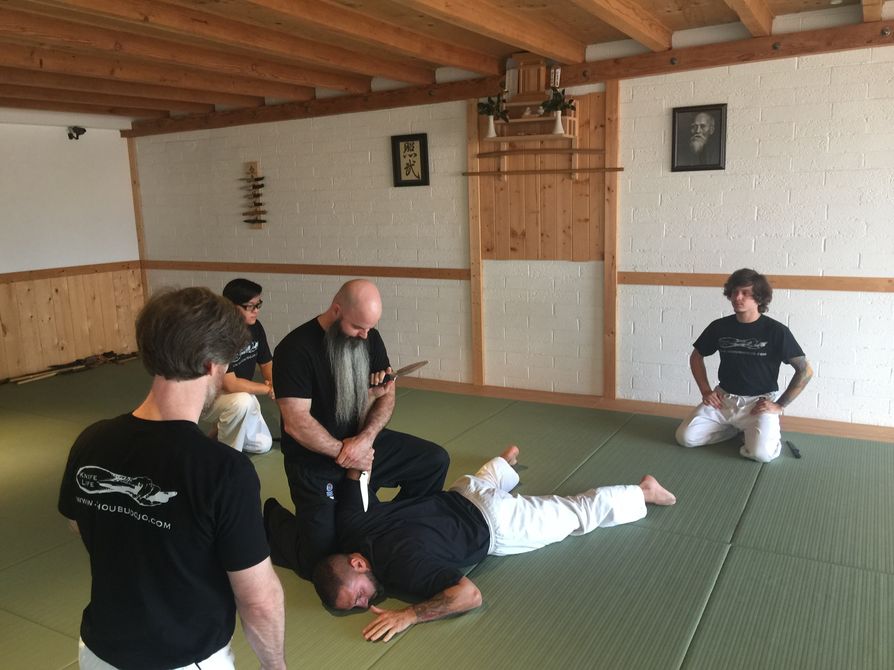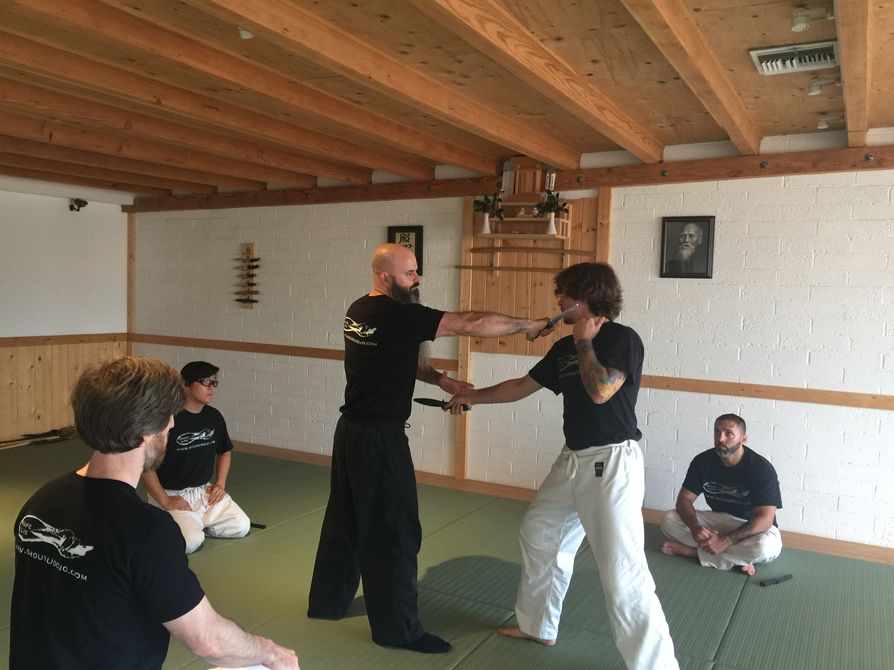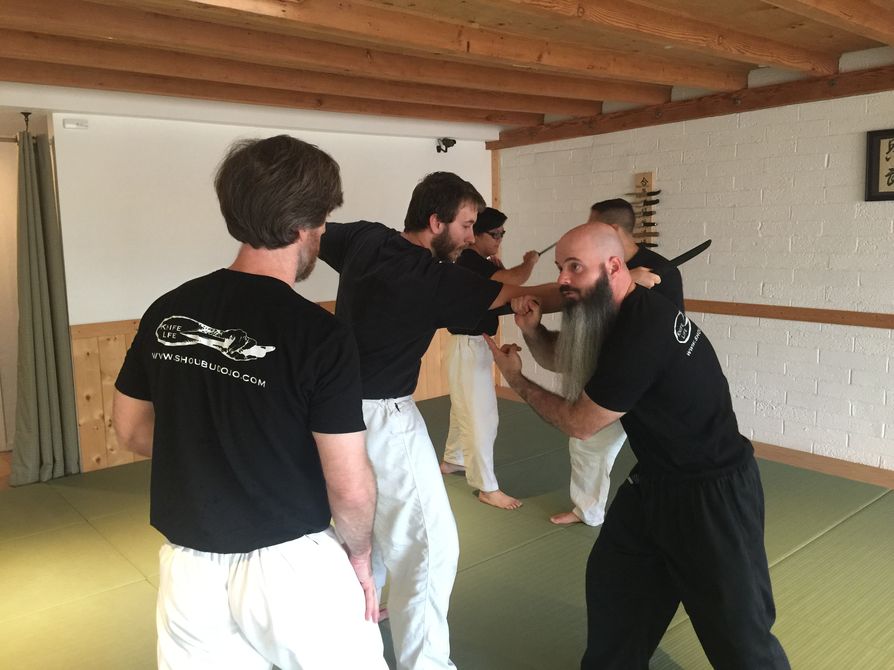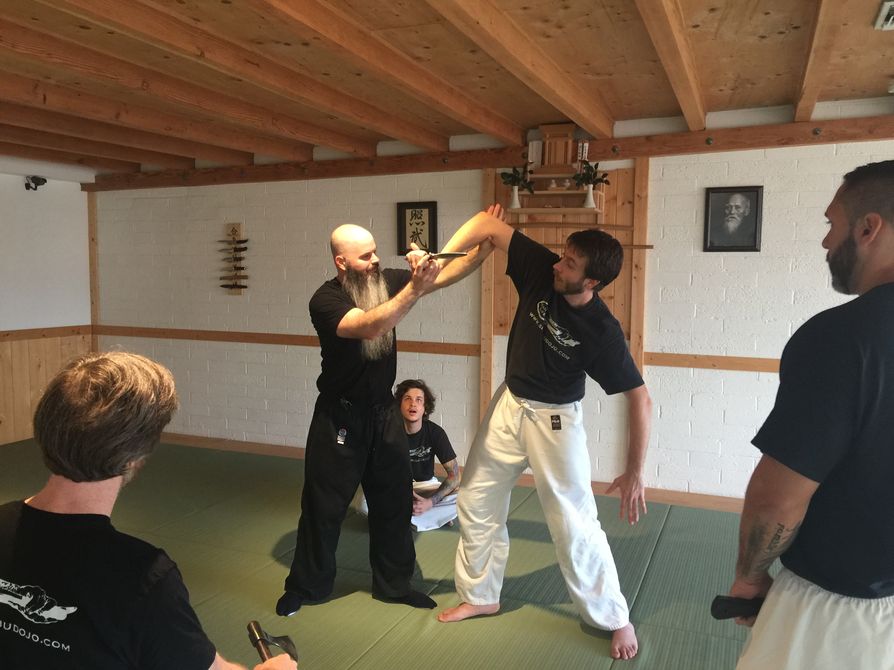Come on down to observe or try class if you have any questions. We look forward to seeing you.
We are at 5556 E. Speedway Blvd. Ste.180 Tucson, Arizona Click for map
Aikido Class
Mon, Wed, 6:00-7:30 PM, Saturday mornings from 9-10:30am
The Traditional art of Aikido taught in an authentically Shinto enshrined Dojo.
Knife Fighting Class
Saturdays 10:45-11:45 AM
Learn how to use a knife in combat, as well as how to defend against one. In the Knife Fighting class we practice state of the art knife fighting techniques including armed disarms, anti-sentry, joint locks, stealth and non-deadly force.
Why Aikido is the Martial Art for You
If you are looking for a martial art that can help you defend yourself in any situation, improve your physical and mental health, and enrich your life with a deep and meaningful philosophy, then you should consider Aikido at the Shoubu Dojo. Aikido is a Japanese martial art that is based on the principles of harmony, martial technique, and self-improvement. Aikido is not just a way of fighting, but a way of living.
Aikido is Effective
Aikido is an effective martial art that can match the scenario that you might find yourself in. Unlike some martial arts that rely on brute force, speed, or aggression, Aikido uses the attacker’s energy and momentum against them. Aikido techniques involve economic movements, joint locks, throws, and pins that can neutralize any attack, whether it is a punch, a kick, a grab, or a weapon. Aikido does not require strength or size, but rather skill and timing. Therefore, anyone can practice Aikido regardless of their age, gender, or physical condition.
Aikido is Ethical
Aikido is an ethical martial art where the virtue of respect is at its core. When practicing Aikido, the dignity and safety of both the defender and the attacker are paramount. Aikido does not have any attacks or strikes in its repertoire, but only defensive moves that aim to control and subdue the opponent without causing unnecessary harm. This is especially important in today’s high-tech society, where everyone has their phone or you are most likely being recorded. If you unfortunately find yourself in a court of law answering for the damage you may have done to your attacker, studying a martial art that has no attacks in it and is purely defensive will go a long way rather than studying something that teaches you very offensive techniques that can permanently harm someone like eye gouging etc. Aikido also gives you the flexibility to adjust the level of force according to the situation. You can either lay an attacker down softly and pin him until authorities arrive, or you can also go to the extreme if you have to and throw them down hard enough where they will not get up again, or break their arm or leg to defend yourself.
Aikido is Traditional
Aikido is a traditional martial art that preserves the heritage and culture of Japan. Aikido techniques come from the Japanese samurai hand to hand combat techniques and sword movement. Aikido also incorporates elements of Shinto, Buddhism, and Taoism in its philosophy and practice. Aikido is not just teaching physical movement that helps you learn how to fight, or worse, how to do it with rules in a cage, but it is a place to learn self-defense and how to protect your loved ones. Unlike many martial art disciplines out there, you will have incredible lasting effects that will be priceless when you are no longer in your physical prime.
Aikido is Spiritual
Aikido is a spiritual martial art that cultivates your inner peace and harmony. The word Aikido means “the way of harmony”. Aikido teaches you how to align yourself with the natural flow of life and how to overcome your ego and fears. Aikido also develops your awareness, discipline, concentration, self confidence and compassion. Studying Aikido is a journey and a wondrous exploration into your own spirit as you strive to reach your utmost potential.
Aikido offers you many benefits that other martial arts do not. Aikido is effective, ethical, traditional, and spiritual. It can help you defend yourself in any situation, improve your physical and mental health, and enrich your life with a deep and meaningful philosophy. Everyone can accomplish victory if you have the courage, grit, strength, and resilience to do so. If you do not have these qualities, you will acquire them here. Start your martial art training today. Not tomorrow. Not next week. There is only now. The power of now is all you have and all you need. Come watch class today and start the journey of a lifetime. You do not need an appointment, just come in and watch class anytime!


